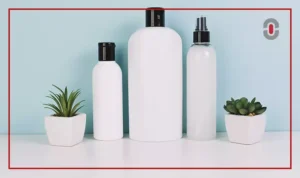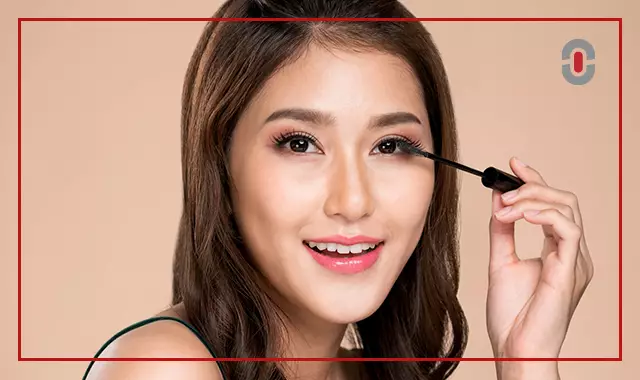AI Overview
| Category | Summary |
| Topic | Entering and Succeeding in the Korean Beauty Market |
| Purpose | To guide international beauty brands through the practical, cultural, and regulatory steps required to enter Korea’s fast‑evolving cosmetics market successfully. |
| Key Insight | Winning in Korea demands more than product innovation; it requires deep localization, MFDS compliance, and authentic connection with Korean consumers. |
| Best Use Case | For marketing, export, and product teams planning expansion into Korea’s K‑beauty sector who need to understand consumer behavior, compliance frameworks, and digital marketing strategies. |
| Risk Warning | Overlooking cultural nuance or regulatory precision can lead to poor product‑market fit, costly delays, and loss of consumer trust. |
| Pro Tip | Collaborate with local distributors and language experts to align packaging, ingredient lists, and campaigns with Korean expectations and regularly monitor trends through platforms like Naver and KakaoTalk. |
Introduction
The K-beauty market, valued at over USD 10 billion and continuing to grow, has become a global benchmark in the beauty industry for innovation and skincare excellence. Consumers in Korea are fast-moving, digitally connected, and highly trend-driven. For international brands, this market represents both a major opportunity and a complex challenge. Success requires more than high-quality products; it demands cultural fluency, full regulatory compliance, and a clear localization strategy tailored specifically for Korean consumers.
This guide outlines the essential steps, risks, and best practices for global beauty brands entering and scaling within the dynamic Korean market.
Understanding the K-Beauty Market
South Korea’s beauty industry is among the most competitive and fast-evolving in Asia. Millennials and Gen Z consumers are driving change through conversations around sustainability, transparency, and innovation. These audiences are informed, value authenticity, and expect brands to reflect their ideals.
Risk: Underestimating Market Complexity
Many global companies assume that success in other Asian regions will automatically translate to Korea, it rarely does.
Impact: Poor Product-Market Fit and Brand Rejection
Without deep cultural and linguistic localization, even premium products can be ignored, wasting marketing budgets and damaging reputation.
How to Fix It: Conduct Targeted Market Research
- Focus on key categories: skincare dominates, followed by makeup and multifunctional formats such as cushion compacts and ampoules.
- Track consumer preferences: Korean customers prefer gentle, natural ingredients, multifunctional benefits, and visible innovation.
- Analyze competition: local K-beauty brands move fast, are data-driven, and have deep consumer insight. International entrants must stand out through authenticity, trust, and consistent value.
Example: Brands like Dr. Jart+ and Amorepacific became global leaders by combining innovation with storytelling rooted in Korean culture — a lesson many foreign companies overlook when entering Cosmetic Korea.
Navigating Cosmetic Regulations and Compliance
Korea’s Ministry of Food and Drug Safety (MFDS) enforces some of the strictest cosmetic regulations in the world. Full compliance is mandatory before any product can enter the market.
Risk: Overlooking Regulatory Details
Even small misunderstandings can delay or block product entry.
Impact: Launch Delays, Fines, or Product Bans
Non-compliance can result in shipment holds, recalls, or permanent reputational damage.
How to Fix It: Plan Proactively and Stay MFDS-Compliant
- Register every product with MFDS, including a complete ingredient list.
- Exclude restricted substances and ensure all formulations meet Korean safety standards.
- Follow labeling requirements: all packaging must include Korean-language usage instructions, warnings, and distributor information.
- Conduct mandatory safety testing and obtain the necessary certifications before launch.
Practical Note: Claim wording requires careful localization. For example, “whitening” and “brightening” have distinct regulatory meanings. Functional claims must align with MFDS-approved phrasing. Partnering with language and compliance experts like 1-StopAsia ensures that ingredient lists, product claims, and labeling are translated correctly and remain compliant within Cosmetic Korea.
Building an Effective Market Entry Strategy
Choosing the right entry model is essential for long-term success in the K-beauty market.
Risk: Selecting the Wrong Entry Path
Rushing in without a solid strategy can lead to inefficiencies and poor visibility.
Impact: Limited Growth and Weak Partnerships
Improper market setup can reduce scalability and damage relationships with distributors or retailers.
How to Fix It: Evaluate Entry Models Carefully
- Direct Export – Low cost and quick, but limited insight.
- Local Distributor – Balanced control and speed; success depends on distributor quality.
- Joint Venture – Shared risk, faster local learning.
- Wholly Owned Subsidiary – Full control, highest cost, long-term stability.
Local Partnerships: Collaborate with experienced distributors, retailers, and Korean beauty influencers. Local partners provide critical cultural and market knowledge.
Pricing & Channels: Adjust pricing for competitiveness while maintaining quality perception.
Combine online platforms like Coupang, Gmarket, and Naver Shopping with offline retail such as Olive Young and department stores for a strong omnichannel presence.
Tailoring Marketing and Branding for Korean Consumers
 Korean customers value brands that respect local aesthetics, communication styles, and social values. Simple translation rarely achieves this depth of connection.
Korean customers value brands that respect local aesthetics, communication styles, and social values. Simple translation rarely achieves this depth of connection.
Risk: Generic or Misaligned Branding
Global campaigns that ignore local nuance often underperform.
Impact: Low Engagement and Weak Affinity
Messages that feel foreign fail to resonate and slow down sales momentum.
How to Fix It: Create Culturally Attuned Marketing
- Adapt brand positioning to align with Korean ideals such as self-care, clear skin, and innovation.
- Leverage digital marketing channels Instagram, KakaoTalk, YouTube and collaborate with KOLs (Key Opinion Leaders) who influence trends.
- Localize visuals, tone, and messaging to align with Korean market expectations.
- Build authenticity through storytelling, mission transparency, and proof of quality.
- Engage communities via pop-ups, beauty forums, and social campaigns that foster genuine connections.
Applied Insight: Subtle linguistic differences can strongly influence performance. Skilled linguists test tone, honorifics, and search terms such as “acne-prone” versus “troubled skin” to optimize engagement and visibility on Cosmetic Korea platforms like Naver.
Overcoming Common Challenges
The Korean beauty ecosystem evolves quickly. Brands that thrive are those that remain agile and proactive.
Risk: Supply Chain Gaps and Counterfeiting
Short product life cycles and dense retail networks can create logistical challenges and imitation risks.
Impact: Lost Sales and Brand Erosion
Stock shortages or counterfeit items can erode consumer trust.
How to Fix It: Strengthen Operations and IP Protection
- Work with reliable logistics and inventory partners.
- Register trademarks early and monitor Cosmetic Korea channels for potential infringement.
- Hire bilingual local staff for marketing and retail operations.
- Stay alert to regulatory updates and emerging trends for rapid adaptation.
Actionable Takeaways
- Conduct in-depth market research on Korean consumers and competitors.
- Partner with trusted distributors, retailers, and influencers.
- Develop digital marketing strategies tailored to K-beauty culture.
- Ensure full MFDS compliance before launch.
- Maintain agility to adapt based on feedback and trends.
Conclusion: Winning in the Korean Beauty Market
The K-beauty market offers tremendous potential for brands willing to commit long-term. Success requires more than innovation; it depends on cultural understanding, regulatory precision, and solid local partnerships.
Approach Korea with patience, adaptability, and a strong localization strategy. By aligning compliance, marketing, and distribution from the outset, brands can earn trust and achieve sustainable growth.
If your company is preparing to enter or expand within the Korean market, 1-StopAsia’s localization and compliance experts can help validate your Korean copy, ingredient lists, and packaging layouts to ensure your brand meets both regulatory and cultural standards.
